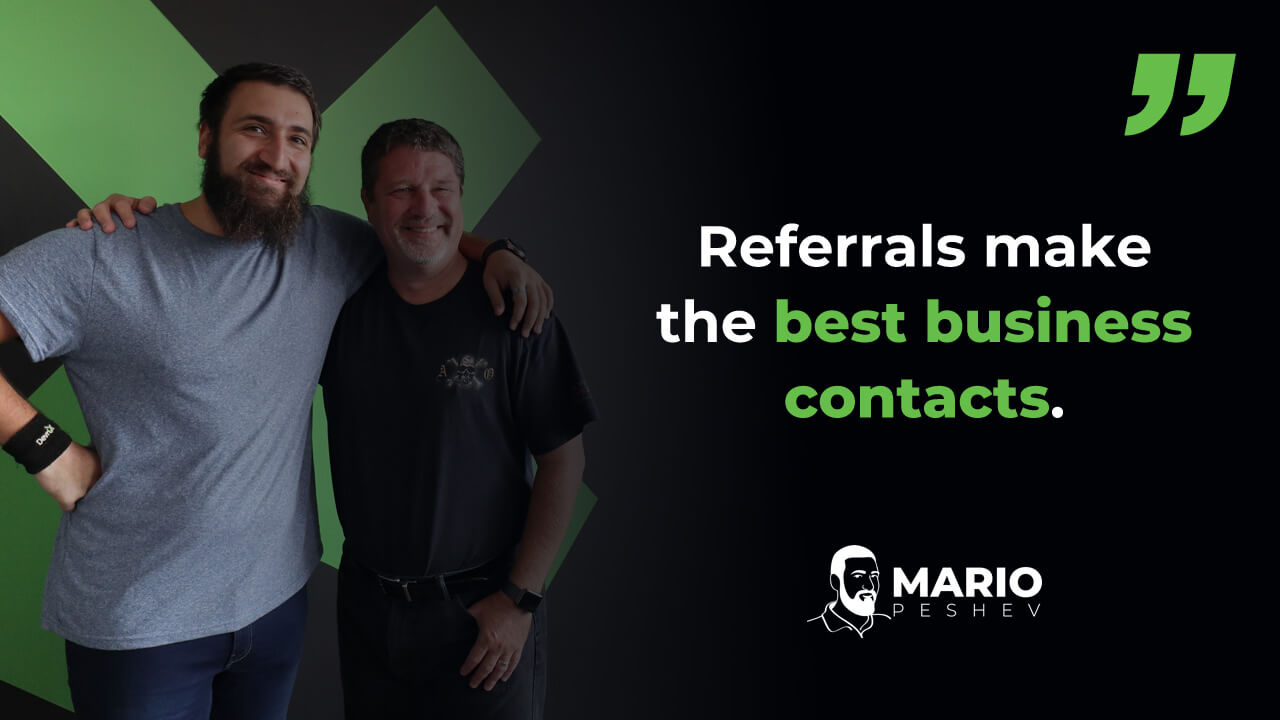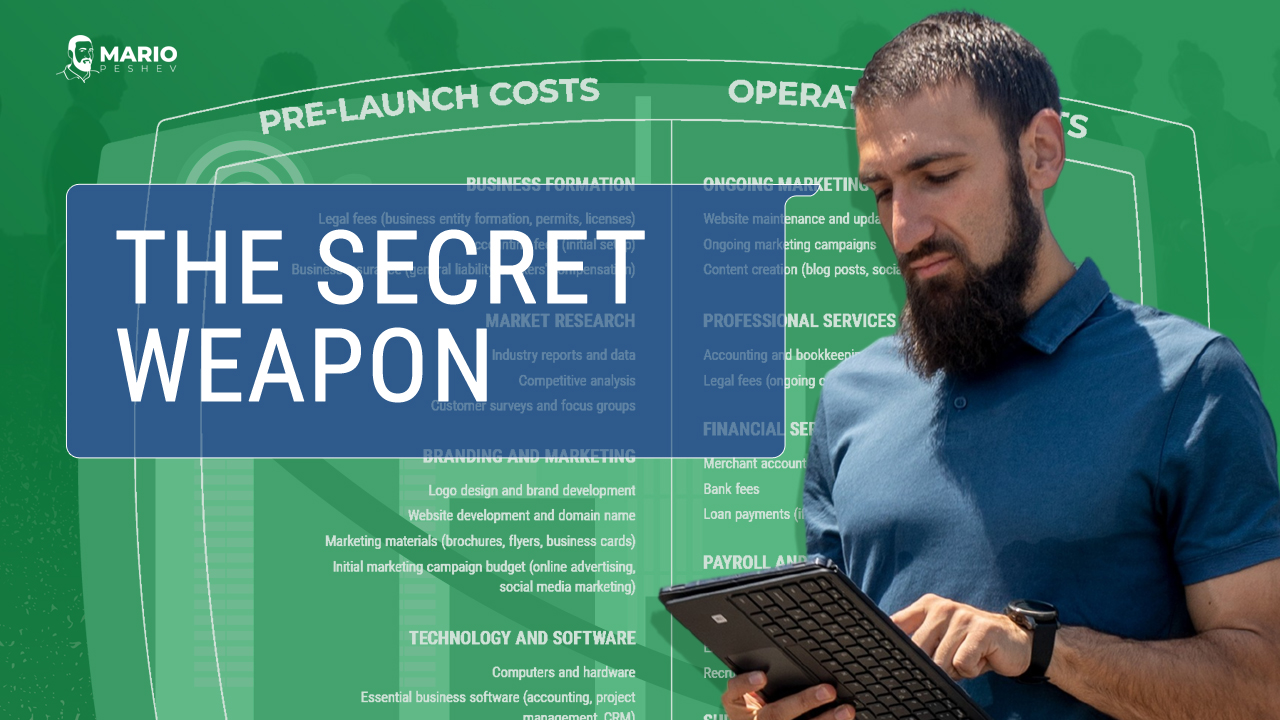The reason I find networking critically important is simple.
Referrals make the best business contacts. Freelancers get a lot of business through word-of-mouth. Internships are often contingent on a common point of contact. Hiring for a senior management position is almost completely dependent on networking.
Moreover:
- Plenty of brilliant minds are introverts. You don’t always get to meet them at events. Social media and blogs, as well as smaller meetups or alumni gatherings, could be instrumental in meeting the right peers.
- Nowadays, jobs often deal with sensitive data. Trust is a major factor. Keeping the intellectual property in place isn’t just defensible through contracts.
- Networking can increase the lifetime of your partnership. You get to study your peers over an extended period of time, compared to a brief interview.
Also, you’d be surprised how open, responsive, and helpful people can be if you reach out politely. Information transparency is literally the best Internet perk by and large. Return the favor by being a good networker yourself so you can enjoy more from making new connections and taking care of old ones.
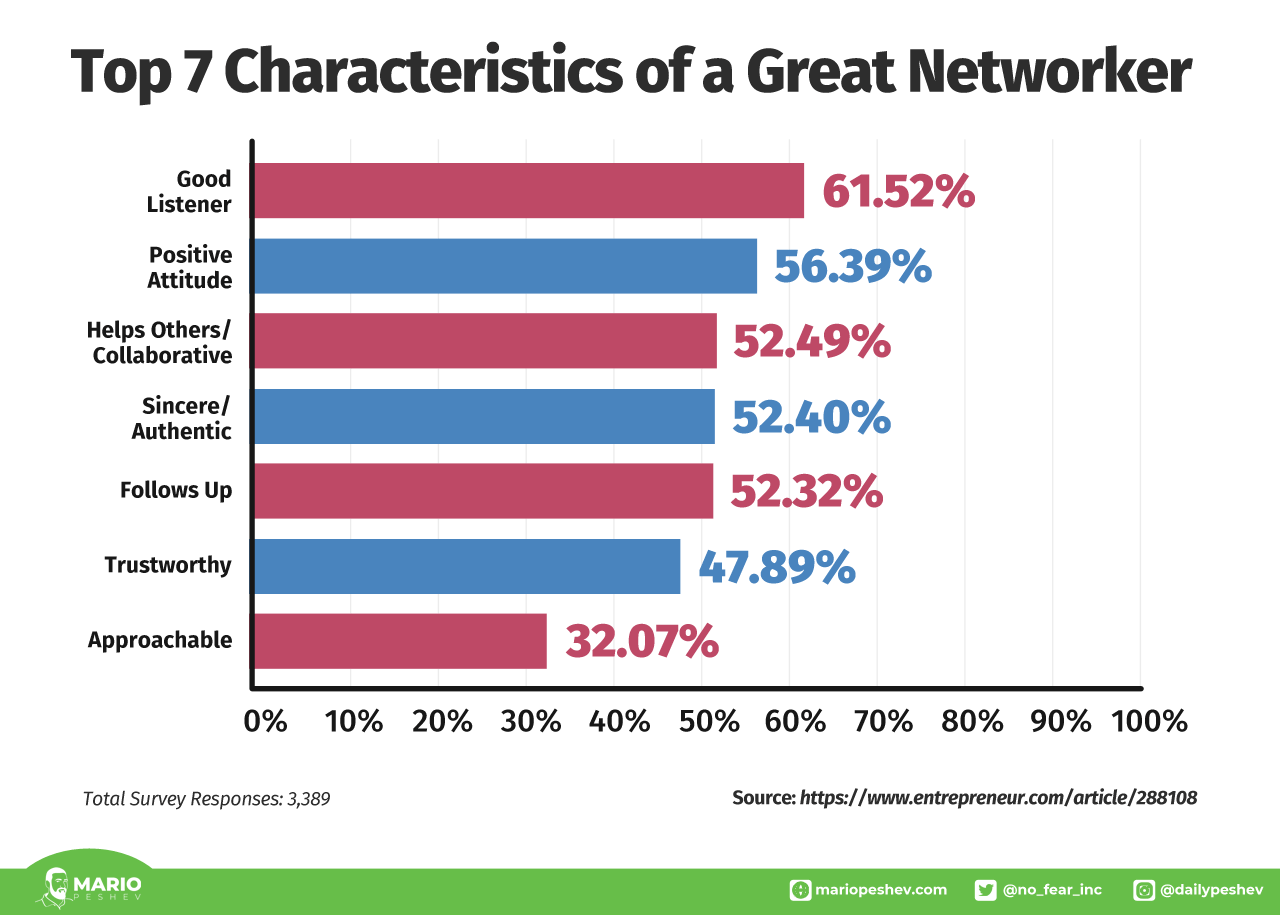
But even if many praise networking, it’s still undervalued. From a business standpoint, that’s especially valid for graduates and university students who haven’t found the right mediums to interact with business professionals and other industry experts in their field.
It may take a long while to learn the ropes, and this has to be taught across the globe early on.
Networking Shaped My Professional Journey
Networking has effectively shaped most of my career path since day 1.
I taught myself basic programming at a very early age – somewhere in middle school. Initially, I started with a physics/chemistry toolkit for school which I’d use to calculate formulas and make my life easier with certain assignments. I built a couple of static websites and other simple tools and apps.
Then, I prepared a course project for my chemistry class with a fancy shiny Visual Basic Mendeleev periodic table that all of my classmates could use. I released that as a free application in a popular portal for downloads. It got featured and I earned a free subscription to a couple of software magazines – and met several other developers as well.
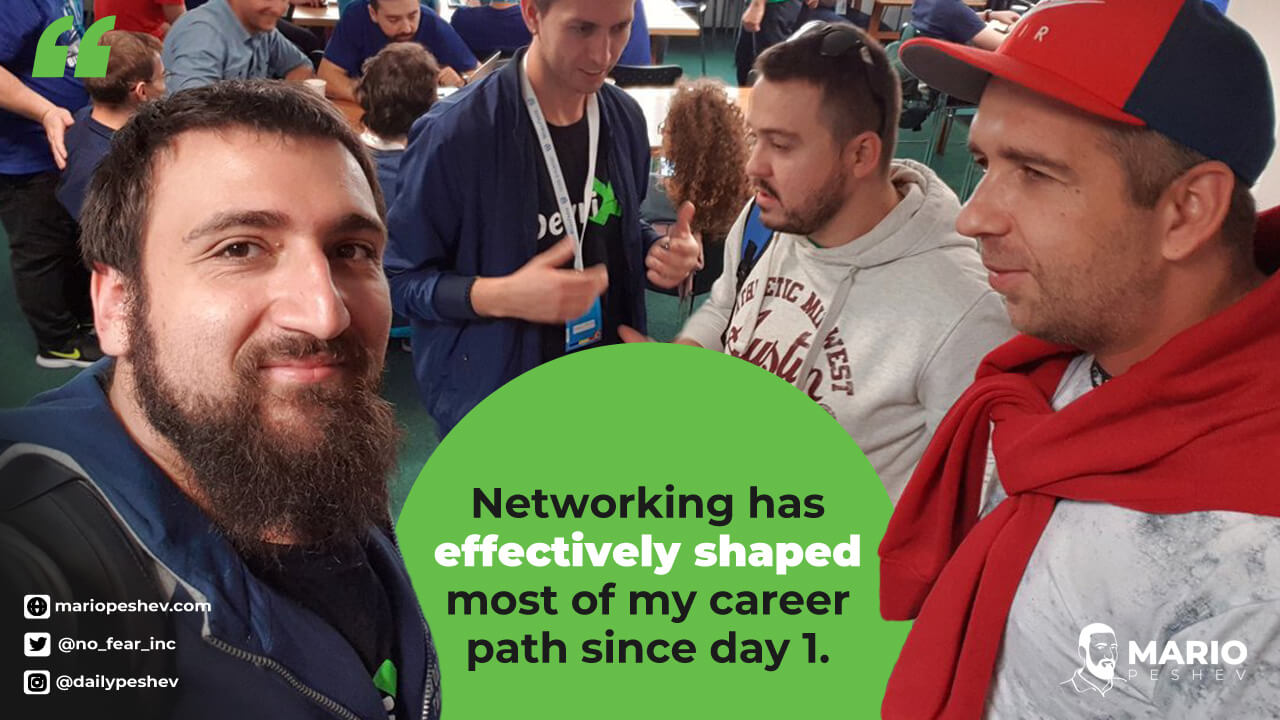
This local “fame” was sufficient to start a freelance gig. Such included gigs in in the local IT shop maintaining computers (reinstalling Windows, cleaning up viruses, replacing hard drives, etc.) I was spending a day a week on home maintenance, visiting business owners, DJs, journalists, and policemen who were facing IT problems.
Some of the IT shop fellows invited me to translate tech news for the largest local IT news website. One of my editors introduced me to another community where I landed a job as a site administrator compiling resources on thousands of different topics (think of a systematized classifieds website or condensed Yellow Pages per subject).
Also, my first startup was an intro by my editor at IDG where I released a weekly security newsletter for them. He was one of the admins of the aforementioned IT news website.
I’ve also enrolled in a Java/C# programming class in the meantime. That went well as I progressed quickly and got referrals from my assistant professor which landed me an interview at the training academy. I juggled with both jobs until I switched full-time to the latter dealing with software development and training.
My next job was a referral from the boyfriend of a colleague of mine. Turned out we had graduated from the same school which helped out as well.
Since I was a seasoned technical trainer, my first courses at VMware and Software AG were arranged by former colleagues or trainees of mine, too. Both my consulting gigs for CERN and Saudi Aramco were referred by a fellow trainer of mine who was raising a baby and was no longer interested in traveling abroad.
Why I Preach About Community Involvements
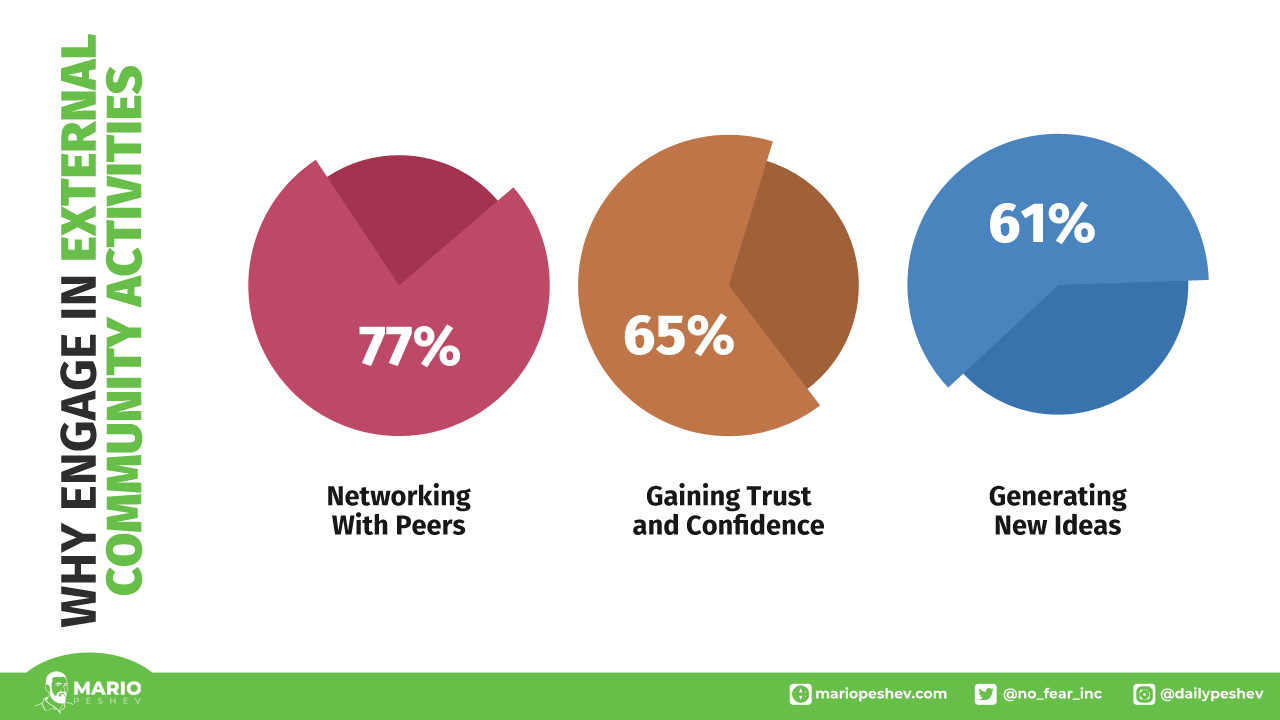
Basically, external community involvements are beneficial to those aiming for the following:
- Networking with peers (77%)
- Trust & confidence (65%)
- New ideas (61%)
Most of my future career moves were also related to community activities and referrals. From freelance gigs through partnerships within the WordPress communities, meeting clients at events, and collaborating on open source projects – all of those were instrumental in building and growing my business.
Our local team is mostly comprised of referrals and folks that I’ve met elsewhere. Four of my developers have attended my programming classes or reported to me for their diploma projects. Some of the applicants have watched my online training videos or attended conferences that I’ve organized.
I could probably expand on my career story even further, but my networking and community activities have influenced my career progression big time. This is the main reason why I preach about community involvement and engaging in organizing conferences or meetups. Some of my best friends I’ve met at events over a decade ago and we’ve regularly partnered up on various projects.
To meet new people who can be beneficial to you in your job or in your business, you have to network. Often, networking is done through social activities.
Over the years, however, I have realized that networking, particularly in the B2B industry, can be very complex and challenging.
You want to grow your business and find more recurring revenue so the next logical step would be to engage in networking activities. But how are you supposed to effectively and constantly do networking when you have a job or a business to run most of the time?
Let me share with you the different experiences I have had in relation to networking, along with some lessons to help you with your own networking endeavors.
Networking Within the Workplace
Approaching the CEO in an organization employing 5,000+ people may be tough. Most CEOs running large corporations are extremely busy and often have the capacity to interact only with a smaller number of people (the board of directors, the rest of the C-Suite, VPs, senior management). They may occasionally engage with other employees over lunch or during company retreats, but that’s pretty much it.

Helping out Whenever Possible
Some senior managers aren’t team players. That’s often a bad signal during the interviewing process but some manage to pass for various reasons (or gradually grow in the company). That’s also a tough one and may backfire.
If you’re working in a smaller organization or interacting with your direct manager, that’s feasible. Just try to engage in a chit-chat at first, greeting them on your way in/out of the office, and asking some friendly questions. If you identify a common topic, feel free to share your thoughts or, even better, ask some follow-up questions, lean back, and listen.
As long as you don’t come off as “needy” or someone begging for a promotion, this falls into a normal team spirit conversation that could be ongoing. If your manager interacts actively online, you can safely like a tweet of theirs or comment on a LinkedIn status. That generally boosts the engagement and helps them out, too.
Pinpointing the Right Topic
Most people simply can’t pinpoint the right topic that their counterpart or superior is interested in.
We had a local guy leading a tech community I was fairly fresh in. He’d been 5–7 years ahead in the game, extremely professional and absolutely brilliant. But I’d always tried to talk shop with him and discuss the latest hot news in the field. He was often bored by this and I’d often find him talking with strangers about music, movies, or food.
Fast-forward a few years, we met occasionally at coffee shops around the world or the same technical events. I was no longer into discussing the same old stories over and over – most people were approaching me with similar questions anyway. We occasionally grabbed lunch together, visited some local places, tasted delicious local food, and talked about travel appointments or challenges with airports or Airbnbs.
Both of us had fun and met more frequently. He texted me when he was flying in for a coffee or a brunch. He is still a freaking rockstar that I truly respect and we’ve never been “equals” in a way.
It took me several years until I figured out why he was not passionate about the boring and repetitive topics I was approaching him with. Once I was on the same page, communication was smooth and pleasant for both of us.
Networking in the Digital World
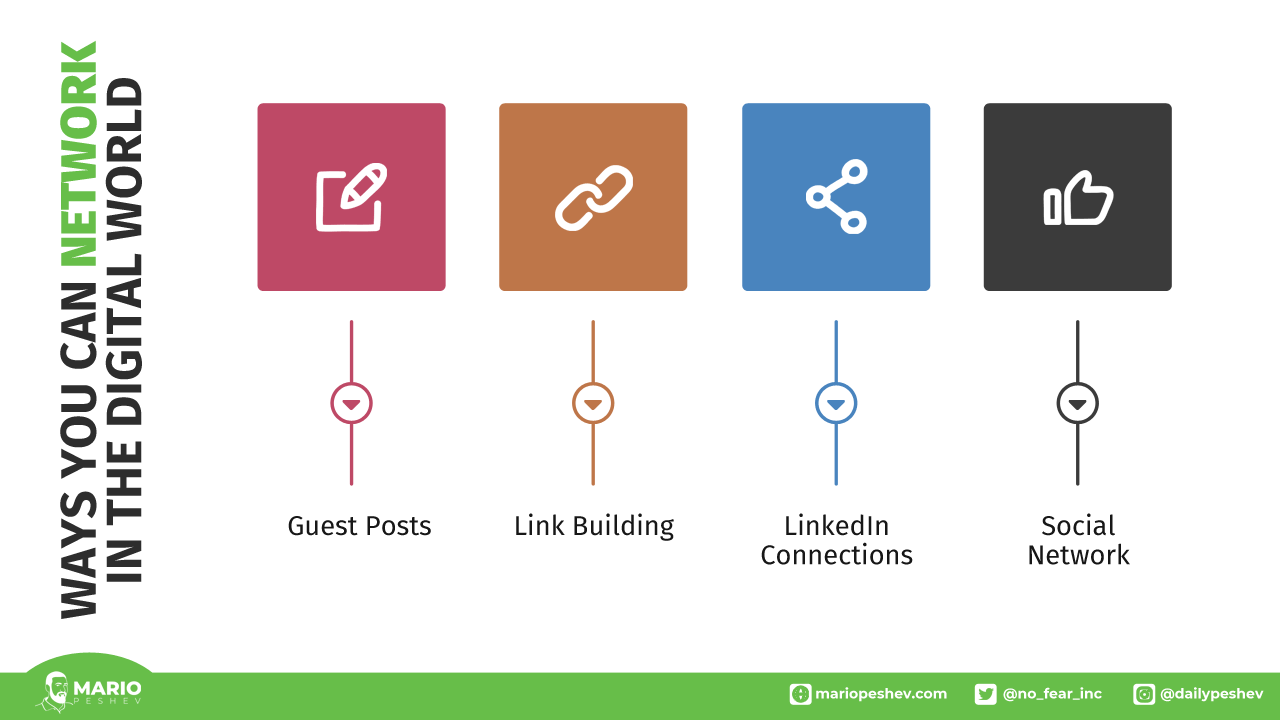
Networking works differently in the digital world. Often, it’s much more complex so many of those who try to build a network online commit blunders.
There are specific patterns that are blindly followed by starting entrepreneurs who read a blog or followed an online course on influence marketing, link building, guest posting, or anything along those lines which requires outreach.
Applications for Guest Posts
Owning several websites with higher DA often leads to a dozen or two monthly requests from entrepreneurs who want to pitch a story. While we’re generally accepting decent stories, the fact that the majority of the folks use the very same template without proposing relevant stories to our audience is negligent.
Link Building Templates
There are several strategies for uncovering link-building opportunities such as looking for broken links or brand mentions without links and the like.
The problem is those newbie entrepreneurs or digital marketers don’t care about crafting something unique and relevant to the business, and we receive a ton of these. There’s zero initial communication as well, so it pretty much comes like a cold email. Jeff Bullas recently shared a guest post that shamed some of those folks – and it may work for small starting blogs, but once you’ve received the same template 50+ times, it’s insulting.
Generic LinkedIn Automated Messages
Some entrepreneurs or connections automate messages on LinkedIn or Twitter, and send some unsolicited links or email forms without building the initial connection first. Growing a network is great, but no one enjoys talking to robots.
Personalize as much as possible.
Self-Promotional Comments
Joining discussions on someone’s blog and publishing genuine and valuable comments is great, but polluting the discussion with generic promotional links is dreadful.
It’s comparable to joining a FB/LinkedIn groups and sharing several links of yours without contributing anything to former discussions or sharing the best industry sources that you’ve been learning from.
Direct Requests for Sharing or Linking to an Article
Another common problem is exploiting cold outreach for direct self-promotion. Josh Steimle also posted a recap from a guest outreach from someone who directly pitched his life story, assuring how this would be invaluable to readers. This is quite extraordinary, impersonal, and disrespectful toward the influencer’s understanding of their readership.
I’m also following a dozen proven marketers who share invaluable insight for building a network, growing the number of backlinks, and reaching out to influencers. But some common sense is required before applying those strategies right away, and hurting the personal brand with other industry experts may have a drastic impact in the long run.
Networking With Enterprise Clients
Yes, enterprises use social networks as most businesses do. Between 2013 and 2019, enterprises use social media primarily for marketing (from 22 % to 45 % of enterprises) and for recruiting employees (from 9 % to 28 % of enterprises).
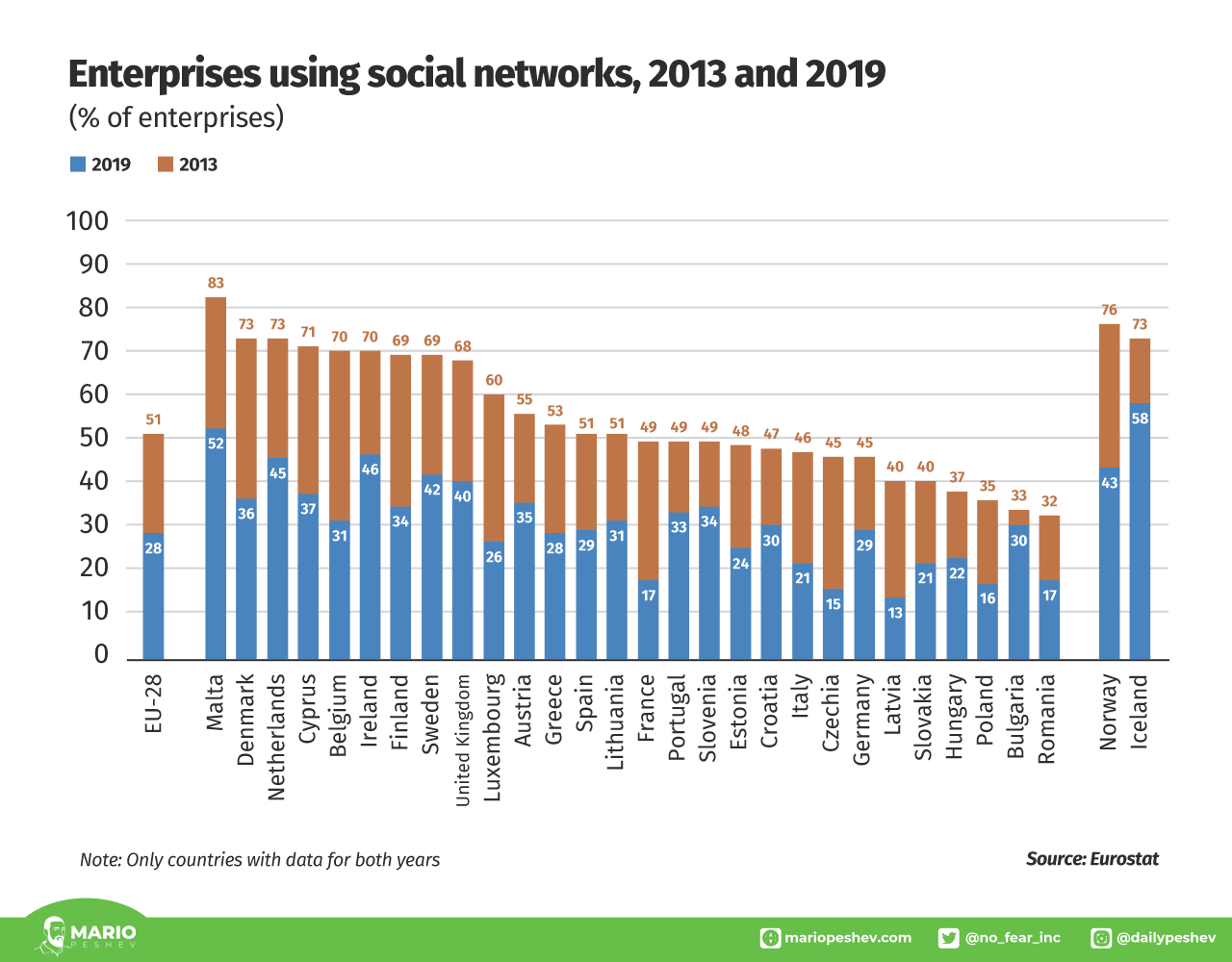
But those aiming to have direct contact with enterprises for networking, know this: SME owners or executives are neck-deep in work, fighting fires all day long, figuring out how to rationalize management overhead, training folks personally, covering for turnover mistakes.
They don’t have time.
I spend a lot of time consulting on digital strategies and the like, but reaching SME management normally ends up being an offline play with events, recommendations, referrals, and other channels that don’t resemble traditional inbound marketing.
So, how can you position yourself for networking with enterprises? The answer varies across industries, of course. several strategies that help agencies or consultants connect with SME owners are:
Events
Every industry has one or two mandatory annual events. Make sure you’re there and maximize the opportunity (gathering attendees, preparing your case, pitching them upfront, and scheduling meetings).
Speaking
In addition to #1, speaking at one of those events is a quick win. Otherwise, if you’re speaking at relevant events, you can combine that with cold emails or LinkedIn InMails inviting managers to your practical talk. It’s measurable, time-bound, and credible at the same time.
Recommendations
“Word of mouth” does wonders in this ecosystem. Tap into your network and find out what’s the best way to connect with the right decision-makers. Don’t hesitate to ping “friends and family”. Moreover, once you work with a few clients, ask them for referrals — their partners, vendors, industry peers who aren’t direct competitors.
Partnerships
Partnerships are one of my favorite marketing channels. Partner up with vendors working exclusively with SMEs. Prepare packaged offers, discounts for their clients, mutual events, anything that could get you closer to your audience.
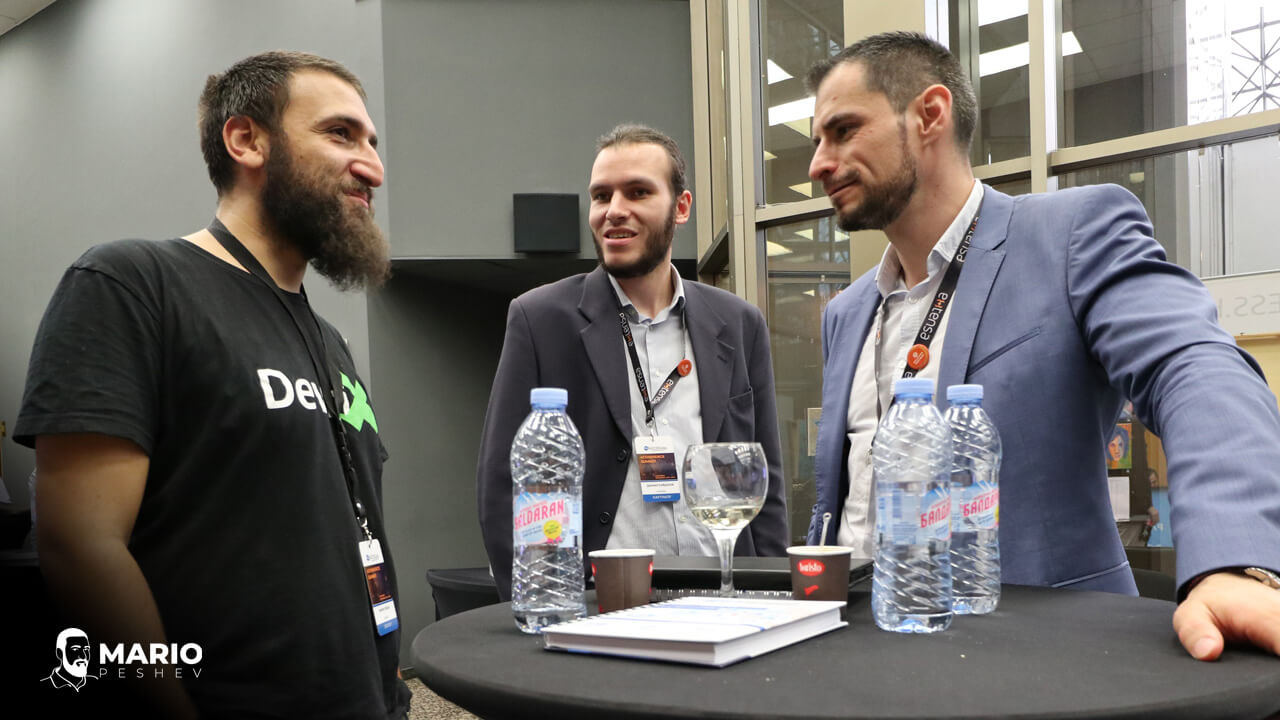
Offline Media
Some old-school industries still rely on radio, newspapers, magazines. Don’t neglect that opportunity. Busy decision-makers may listen to a radio station in your town while driving to the office or read a relevant magazine on a flight.
Cold Calling
It works well if you have some credibility in a particular industry. Case studies and success stories may work really well if your offer is truly good. Hard to bootstrap, but being open to a free consulting meeting/call can make the deal better.
Mailing Packages
Cherry-pick 50 owners or organizations, gather their office addresses and send a physical package. A hand-written letter to connect still works. Even better if you do that before a major holiday. Bonus points for inserting a helpful guide, a brochure with a checklist, or even a short book you’ve prepared for them.
Organizing Seminars
Similar to events, but your rules, your brand, your program. A wonderful excuse to invite decision-makers on-site for a well-thought event solving their pressing pain points. It’s totally worth the investment, especially if you live in a large city and can target locally.
Online Courses
Digital is a lower priority unless it delivers great value. Get a decent smartphone, a $99 mic, and a room without too much echo. Prepare a couple of hours of training materials for your target audience. You can either sell directly (not recommended) or design an intro (yet valuable) training that invites them to a paid consulting plan or whatever you sell. They get the value for free (or low cost) and can’t reject your cold pitch or a package offer.
Networking During the COVID-19 Pandemic

The COVID-19 pandemic has reshaped the direction of our daily lives, with traditional networking taking one of the most significant hits. Gone were the days of casual coffee meetups, business luncheons, and bustling industry conferences.
People had to adapt quickly. The challenge was clear: How do we maintain and build new professional relationships when in-person interactions are limited?
Digital tools and platforms came to the rescue, and virtual meet-and-greets became the new norm. But it wasn’t just about shifting to online platforms; it was about reimagining how we connect, engage, and create meaningful interactions in a virtual space.
While others are taking their time off their business while on lockdown, Dr. Jo Webber, CEO of the social networking app Pod, suggests using your spare time to lay the foundation of your business for future growth by networking online.
In a previous study, 41% of networkers want to network more frequently but they don’t have enough time. However, the reality now is that the people you plan to connect with are at home. They are available and ready for anything of good value or anyone who could provide value – that could be you if you do it right.
Reach out to Old but Good Clients
Now is the perfect time to make a goodwill call (or email) with your previous clients. Karen Wickre, former editorial director at Twitter and author of Taking the Work Out of Networking: Your Guide to Making Connections That Count, recommends reaching out to your old clients not only because you’re trying to sell them something, but also because you want to them to know you wish them well during these times. It can be very rewarding.
There’s a good chance your clients will be able to remember your goodwill when the time comes they need your products or services. You can do the same with your other contacts, such as your partners, colleagues, or employees.
Schedule Online Interviews
With physical events being canceled, you can find several speakers available for an interview and you can partner up with them for a live episode across different channels. But, remember that the goal is to build a network. While it’s good to be comfortable for a start, it will not do you good if you only stick to inviting those in your inner circle.
Get out of your comfort zone and take a shot at inviting those who belong to your broader circle. With a good email pitch or proposal, you can get a positive response from those you invite. Then, showcase your interviews via your social media, podcast, or video channels now that listenership has gone up.
Use LinkedIn More
If you’re thinking about building your network, chances are, others are thinking about it too! And when in business, there is no better platform for making more connections other than LinkedIn. Start by refining your LinkedIn profile and planning your content. I have recently written an article on how business executives can use LinkedIn.
Message your connections via LinkedIn. But, for a more organic and solid impact, do away with standard templates when messaging. Take time to go over your closest connections or potential targets. After all, you have more time now.
How to Connect with People and Grow Your Network
Check out this video I recorded about 2 years ago on how you can find more connections and grow your network.
The thing is, most people stress too much about networking. They focus on the standard protocol or etiquette norms, and following a process, some guidelines, a dress code when meeting in person.
They try to formalize the environment as well and present themselves in the best possible manner.
Well… I don’t buy it.
Sure, the likelihood of making a better impression when you’ve put some effort is higher. You don’t need to be sloppy or careless. But guess what? Overdoing it looks even worse and stresses you out quite a lot if something doesn’t go as planned.
Head to my business strategy guide next for a list of other helpful resources on navigating the business landscape.

